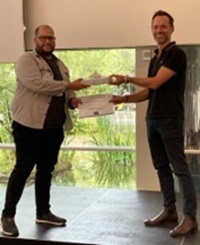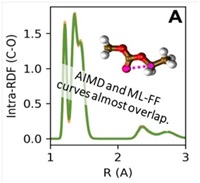The work in WP2 proceeds on the overall goal to find new modelling solutions that make computer simulations at the atomic scale more capable, more accurate and more realistic. Here ML approaches that mimic quantum-mechanical (QM) results without the explicit (and costly) presence of the electrons play a particularly important role. Among recent WP2 achievements we note:
- CNR has been working to the development of automated workflows for the ab initio simulation of x-ray spectroscopic fingerprints in support to experiments. Some basic tools have been already published on github within the official AiiDA plugin for Quantum ESPRESSO (https://github.com/aiidateam/aiida-quantumespresso), while a more complete version is expected soon. Stay tuned!
- UNIVIE and collaborators have also been making progress towards algorithmic and systematic virtual sampling of the chemical compound space of electrolytes. They have also been working on AI methods that will exploit and benefit from the integration of diverse synthetic and experimental data sets.
- New accurate ML potentials for electrolyte mixtures have been developed by CAMU in collaboration with UU. For a range of compositions and temperatures these new potentials manage to give close to perfect agreement with ab initio-MD simulation results, but at a fraction of the cost.
Congratulations to CAMU and UU for their poster "Machine Learning Force Field for Organic Liquids: the EC/EMC Binary Solvent" being awarded an honorable mention in the "Statistics and configuration sampling" symposium at the Psi-k conference in Lausanne, August 22-25, 2022 (presenter Ioan Bogdan-Magdau). This work also won the prize as "most commended poster" at the BIGMAP project meeting 7-8 September in Denmark.


(photo: presenter Daniel Arismendi-Arrieta
and coordinator Tejs Vegge)
- WWU has successfully implemented (in cooperation with 3DS) the application of rs@MD to the intial SEI growth in LP57 at a model anode. Space-time-resolved trajectories for the SEI products are now available and are currently analysed further.